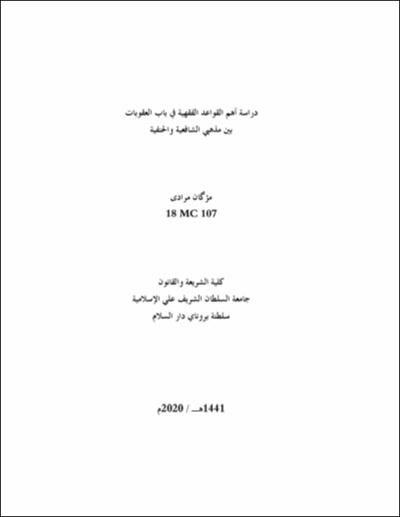دراسة أهم القواعد الفقهية في باب العقوبات بين مذهبي الشافعية والحنفية
Abstract
Muslim jurists have formulated a variety of legal maxims that encompass the Islamic rulings on various topics. The issue of this research is to explore similarities and differences between Shafi‘i and Hanafi schools of legal thought. It aims at identifying and studying the legal maxims related to the area of hudud, qisas and ta'zir. It is a comparative study on the application of those legal maxims. The study relied on a descriptive analytical method by collecting Islamic legal maxims related to hudud, qisas and ta'zir and analyzing their application in the Hanafi and Shafi’i schools of legal thought. The research concluded that the legal maxims related to the punishments in the Hanafi and Shafi’i schools of legal thought amounted to fifty-seven maxims distributed along the hudud, qisas and ta`zir. The Hanafi and Shafi'i jurists agreed on thirty-three legal maxims, and differed on twenty-four legal maxims, noting that the agreement and the difference in this regard are seen from the dominant point of view; as it may be with the overall agreement, there may be a minor disagreement in some parts, as well as the matter with the total disagreement, as there may be two opinions in the one school, one of them is different from the other school and the other opinion agrees with it.
Collections
- MASTER (FSL) [85]
Alternative Title
Islamic Legal Maxims on Punishments: A Comparative Study Between Shafi'i and Hanafi Schools of Legal Thought


